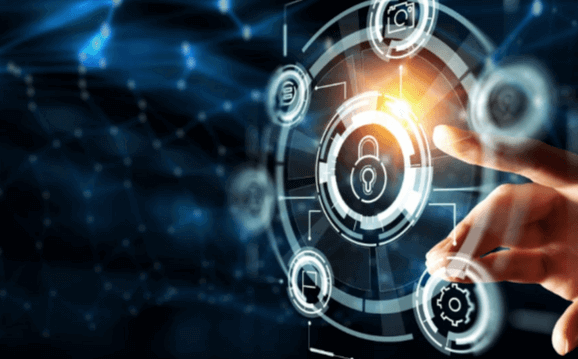What are the implications of deepfake technology on information authenticity and media trust?

Introduction
In the age of digital transformation, deepfake technology has emerged as a double-edged sword. While it holds incredible potential for entertainment and creative industries, it also poses significant threats to information authenticity and media trust. Deepfakes, which are hyper-realistic AI-generated videos or audio recordings that mimic real people, can be used to spread misinformation, manipulate public opinion, and undermine trust in media. This article delves into the implications of deepfake technology on the authenticity of information and the trustworthiness of media sources.
Understanding Deepfake Technology
Deepfake technology leverages artificial intelligence, particularly deep learning algorithms, to create realistic fake content. By analyzing and replicating patterns in images, videos, and audio, deepfakes can produce content that appears authentic but is entirely fabricated. The development of this technology has been driven by advancements in neural networks and generative adversarial networks (GANs), which pit two AI systems against each other to create increasingly convincing forgeries.
How Deepfakes Are Created
Creating a deepfake involves several steps. First, a large dataset of the target individual’s images or recordings is collected. This data is then used to train a deep learning model to understand the person’s facial movements, voice patterns, and other distinctive features. Once trained, the model can generate new content by manipulating existing footage or creating entirely new sequences that appear genuine.
The Evolution of Deepfake Technology
Deepfake technology has rapidly evolved since its inception. Early deepfakes were relatively easy to detect due to obvious flaws and inconsistencies. However, as the technology has improved, the forgeries have become more sophisticated and harder to distinguish from real content. This evolution poses increasing challenges for detecting and mitigating the impact of deepfakes.
The Impact on Information Authenticity
One of the most concerning implications of deepfake technology is its potential to undermine the authenticity of information. In an era where misinformation and fake news are already rampant, deepfakes add another layer of complexity.
Spread of Misinformation
Deepfakes can be used to create and disseminate false information with unprecedented realism. For instance, a deepfake video of a political leader making controversial statements can be used to influence public opinion or disrupt elections. The realistic nature of these videos makes it difficult for the average viewer to discern their authenticity, thereby amplifying the spread of misinformation.
Undermining Public Trust
The existence of deepfakes can erode public trust in authentic media. When people are aware that videos and audio recordings can be convincingly faked, they may begin to question the validity of all media content. This skepticism can lead to a general mistrust of information sources, making it harder for legitimate news outlets to maintain credibility.
Legal and Ethical Challenges
Deepfakes also present significant legal and ethical challenges. Determining the authenticity of content and holding creators accountable is complicated by the anonymity and global reach of the internet. Additionally, deepfakes raise ethical questions about consent, privacy, and the potential harm caused to individuals and society.
Implications for Media Trust
Media trust is already fragile in many parts of the world, and deepfake technology threatens to further undermine it. The implications for journalism, public perception, and democratic processes are profound.
Challenges for Journalists
Journalists face the daunting task of verifying the authenticity of content in an environment where deepfakes are increasingly common. This verification process requires advanced tools and techniques, as well as a heightened awareness of the potential for deception. The pressure to provide accurate and timely information while avoiding the spread of deepfakes can be overwhelming.
Impact on Public Perception
The proliferation of deepfakes can distort public perception of reality. When manipulated content is indistinguishable from real footage, people may struggle to differentiate between fact and fiction. This confusion can lead to apathy, cynicism, and a diminished capacity for critical thinking, ultimately weakening the foundation of informed public discourse.
Threats to Democratic Processes
Deepfakes pose a significant threat to democratic processes by enabling the spread of false information and manipulating public opinion. In electoral contexts, deepfakes can be used to discredit candidates, fabricate scandals, or sow discord among voters. The potential for such interference undermines the integrity of democratic institutions and erodes trust in the electoral system.
Mitigating the Impact of Deepfakes
Addressing the challenges posed by deepfake technology requires a multifaceted approach that includes technological solutions, regulatory measures, and public awareness initiatives.
Technological Solutions
Advancements in AI can be leveraged to develop tools for detecting deepfakes. Researchers are working on algorithms that can identify subtle inconsistencies in videos and audio recordings, such as unnatural facial movements, mismatched lighting, or inconsistencies in voice patterns. These detection tools are essential for helping media organizations and the public identify and filter out deepfake content.
Regulatory Measures
Governments and regulatory bodies must establish frameworks to address the legal and ethical issues associated with deepfakes. This includes creating laws that penalize the malicious use of deepfake technology, protecting individuals’ privacy rights, and establishing standards for content verification. International cooperation is also crucial, as the global nature of the internet means that deepfake content can easily cross borders.
Public Awareness and Education
Educating the public about deepfake technology and its potential implications is vital for building resilience against misinformation. Media literacy programs can help individuals develop critical thinking skills and the ability to assess the credibility of information sources. Public awareness campaigns can also inform people about the existence of deepfakes and the importance of verifying content before sharing it.
The Future of Deepfake Technology
As deepfake technology continues to evolve, its impact on information authenticity and media trust will remain a critical issue. While the technology itself is not inherently malevolent, its misuse poses significant risks. Balancing the benefits of deepfakes in entertainment and creative industries with the need to protect the integrity of information is a complex challenge that will require ongoing effort and innovation.
Potential Positive Uses
Despite the risks, deepfake technology also has potential positive applications. In the entertainment industry, deepfakes can be used to create realistic special effects, resurrect historical figures, or dub movies in different languages. In education, they can provide immersive learning experiences by bringing historical events or scientific concepts to life. These positive uses highlight the dual nature of deepfake technology and the importance of responsible innovation.
Ongoing Research and Development
Researchers are continuously working to improve both the creation and detection of deepfakes. Advances in AI and machine learning will play a crucial role in developing more sophisticated detection methods and ensuring that the technology is used ethically. Collaboration between academia, industry, and government is essential for addressing the challenges posed by deepfakes and harnessing their potential for good.
FAQs
What is deepfake technology?
Deepfake technology uses artificial intelligence to create hyper-realistic fake videos or audio recordings that mimic real people. It leverages deep learning algorithms to analyze and replicate patterns in images, videos, and audio, producing content that appears authentic but is entirely fabricated.
How are deepfakes created?
Deepfakes are created by collecting a large dataset of the target individual’s images or recordings and using this data to train a deep learning model. The model learns the person’s facial movements, voice patterns, and other features, enabling it to generate new, realistic content.
Why are deepfakes a threat to information authenticity?
Deepfakes can spread misinformation with unprecedented realism, making it difficult for viewers to discern their authenticity. This capability can be used.






